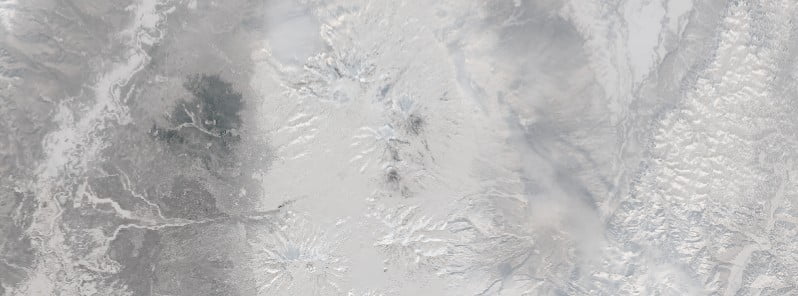Eruption at Bezymianny volcano, Aviation Color Code raised to Orange, Russia

A series of explosions took place at the Russian Bezymianny volcano on March 29, 2023, prompting KVERT to raise the Aviation Color Code from Yellow to Orange. The last notable eruption at the volcano took place in October 2022.
According to the Tokyo VAAC and KVERT, an eruption at 06:17 UTC ejected ash up 6 km (20 000 feet) above sea level, drifting east.
“The activity of the volcano is gradually increasing,” KVERT said at 09:31 UTC and raised the Aviation Color Code to Orange.1
“Probably, a new block of lava is squeezed out on the lava dome of the volcano, this is accompanied by the collapse of avalanches,” KVERT said, adding that an explosive volcanic eruption is possible with the production of ash column up to 15 km (50 000 feet) above sea level, the formation of pyroclastic flows and the spread of an ash cloud hundreds of kilometers from the volcano during next several days.
Ongoing activity could affect international and low-flying aircraft.
Increased activity at Bezymianny was observed on October 22 to 23, 2023, including summit incandescence, intense fumarolic activity, and a rising temperature in a thermal anomaly identified by satellite imagery.2
As a result, KVERT raised the Aviation Color Code to Orange (the second-highest level on a four-color scale). A strong explosive phase started, and by 23:40 LT on October 23, satellite images displayed ash plumes rising to 10 km (32 800 feet) above sea level — this is 7.2 km (24 600 feet) above the crater — and drifting 10 km (6.2 miles) ENE. The Aviation Color Code was raised to Red.
By 10:05 LT on October 24, this eruptive phase had ended, and the Aviation Color Code was lowered to Orange.
Satellite images on October 25 revealed gas-and-steam plumes drifting NE, an intense thermal anomaly, and ash plumes from the previous day drifting as far as 1 915 km (1 190 miles) NE.
At 20:28 LT on October 25, KVERT lowered the Aviation Color Code to Yellow while noting the persistence of the intense thermal anomaly. It was on Yellow until today’s events.
Geological summary
Prior to its noted 1955 – 56 eruption, Bezymianny had been considered extinct. The modern volcano, much smaller in size than its massive neighbors Kamen and Kliuchevskoi, was formed about 4 700 years ago over a late-Pleistocene lava-dome complex and an ancestral edifice built about 11 000 – 7 000 years ago.
Three periods of intensified activity have occurred during the past 3 000 years.
The latest period, which was preceded by a 1 000-year quiescence, began with the dramatic 1955/56 eruption. This eruption, similar to that of St. Helens in 1980, produced a large horseshoe-shaped crater that was formed by the collapse of the summit and an associated lateral blast.
Subsequent episodic but ongoing lava-dome growth, accompanied by intermittent explosive activity and pyroclastic flows, has largely filled the 1956 crater.3
References:
1 VONA/KVERT Information Release, March 29, 2023. KVERT, Institute of Volcanology and Seismology FEB RAS
2 Global Volcanism Program, 2022. Report on Bezymianny (Russia). In: Sennert, S K (ed.), Weekly Volcanic Activity Report, 19 October-25 October 2022. Smithsonian Institution and US Geological Survey.
3 Bezymianny – Geological summary – GVP
Featured image credit: Copernicus EU/Sentinel-2, EO Browser, The Watchers. Acquired on March 13, 2023


Commenting rules and guidelines
We value the thoughts and opinions of our readers and welcome healthy discussions on our website. In order to maintain a respectful and positive community, we ask that all commenters follow these rules.